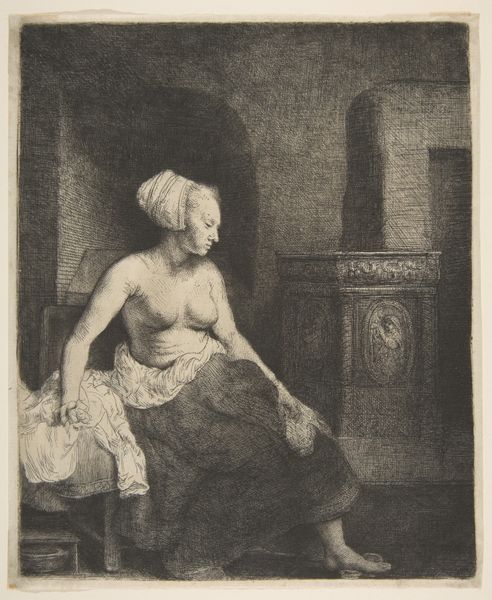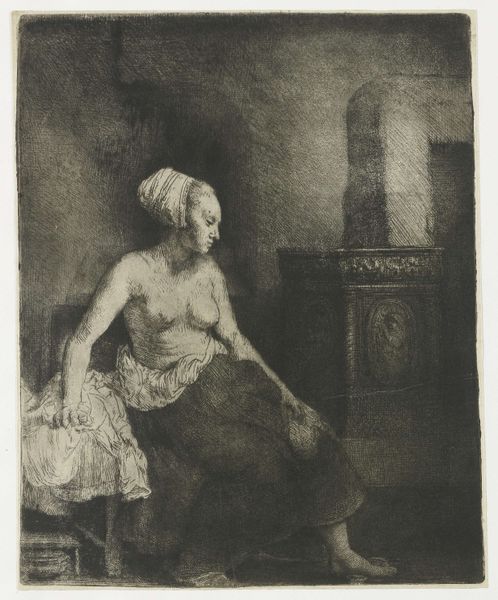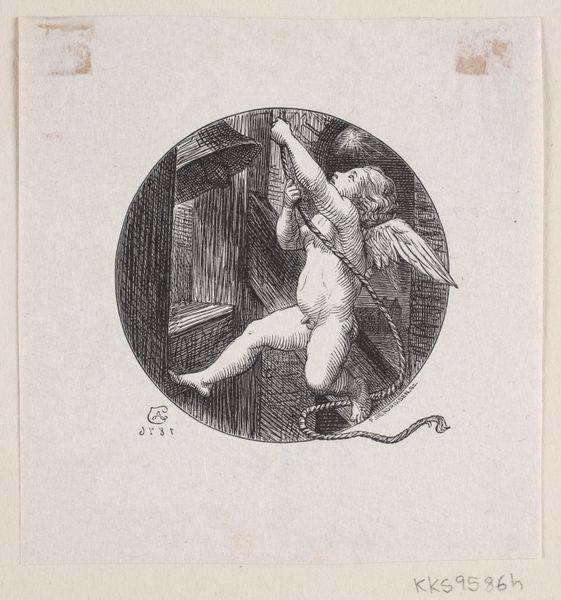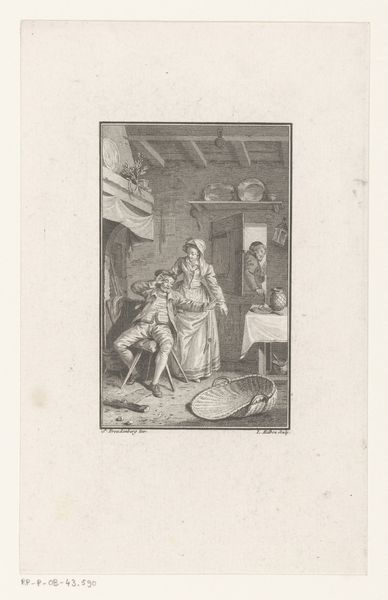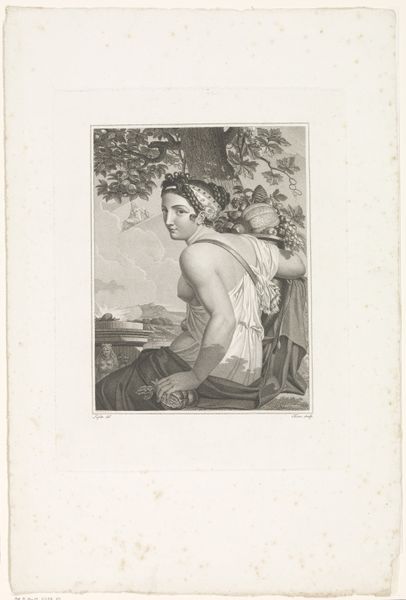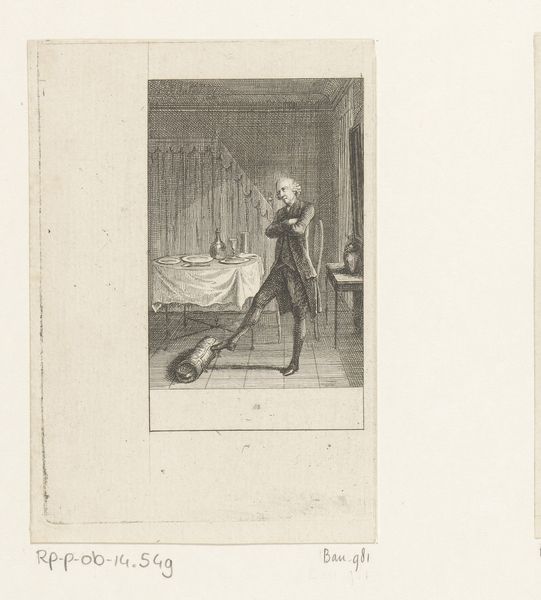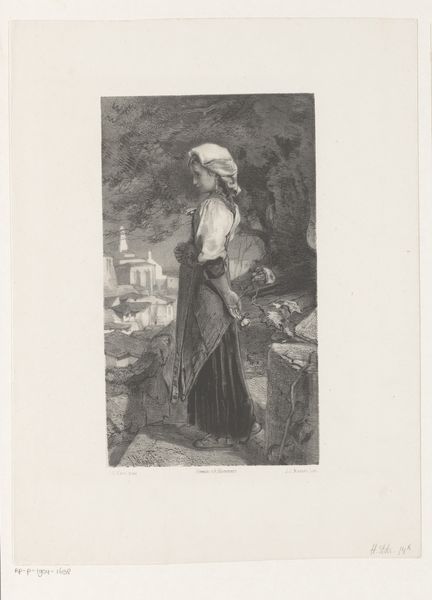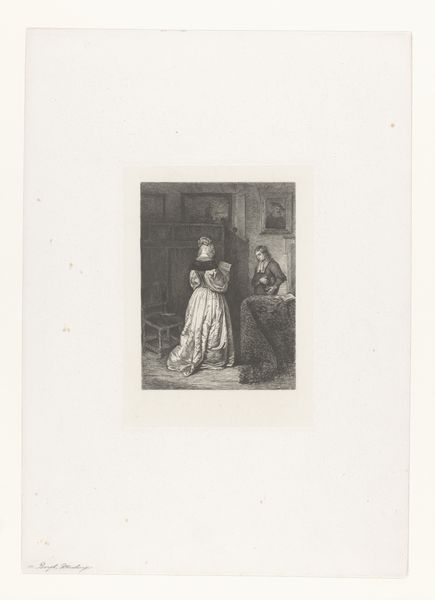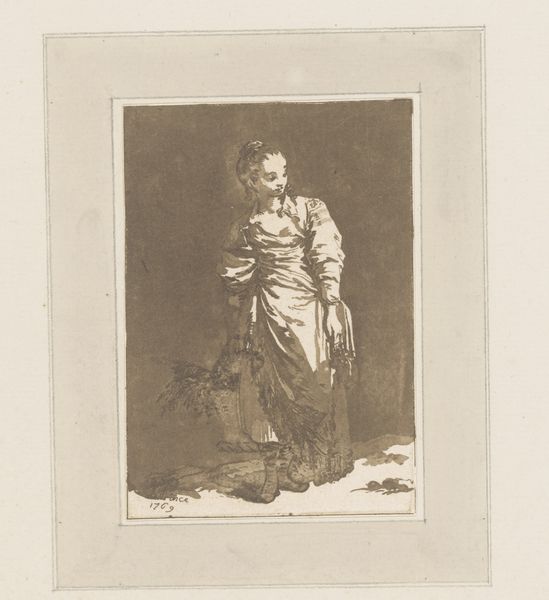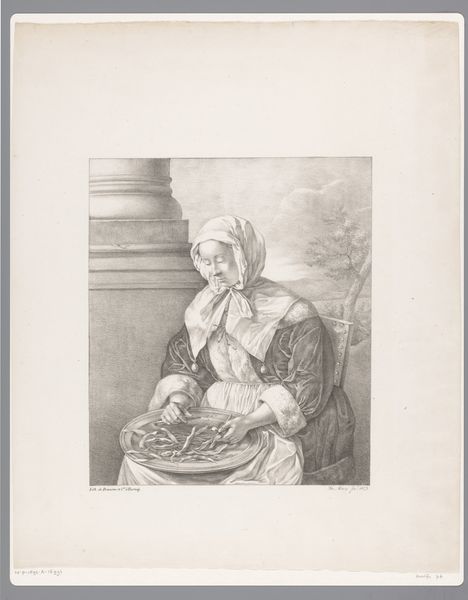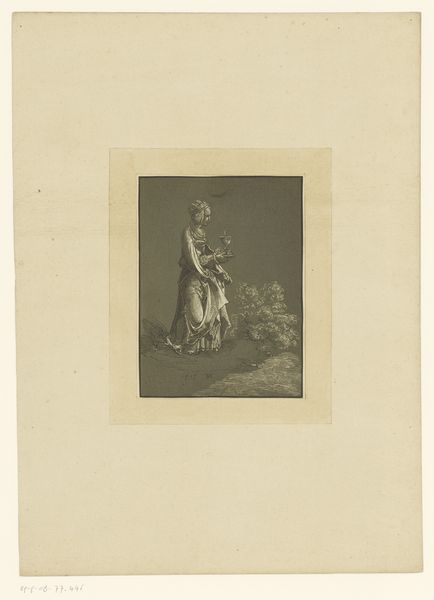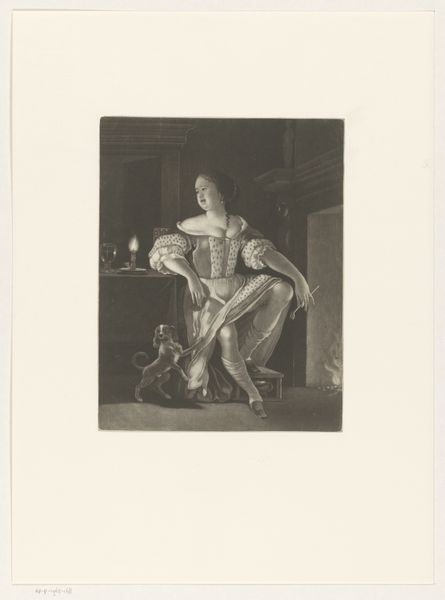
Fotoreproductie van een ets van een vrouw met naakt bovenlichaam bij een kachel door Rembrandt van Rijn c. 1900 - 1930
0:00
0:00
Dimensions: height 228 mm, width 190 mm, height 288 mm, width 246 mm
Copyright: Rijks Museum: Open Domain
Curator: What immediately strikes me is the melancholic tone set by the deeply contrasted light and shadow. Editor: You've picked up on exactly what Rembrandt intended to convey through this photogravure after his etching. This work, from the early 20th century, revisits Rembrandt van Rijn's exploration of intimacy. Curator: Intimacy, yes, and vulnerability. The positioning of the figure beside the kachel, the uncovered flesh... these communicate more than physical exposure, don't they? Editor: Most certainly. In 17th-century Dutch society, such displays were uncommon, thus provoking contemplation. Consider how the work plays into evolving public dialogues around the body through different epochs. The very accessibility facilitated by prints shaped Rembrandt’s lasting influence and the democratization of art. Curator: I can agree that the original context of display must have added shock value, but there is nothing scandalous here. The lack of idealization in the woman’s figure seems an early brush with Realism. What do you see as the function of light in terms of composition? Editor: The light, sourced from an unseen direction, illuminates not to reveal but to sculpt the form with deep chiaroscuro—a defining characteristic of the Baroque. Notice how the texture achieved through etching helps delineate mass and volume, even amidst shadow. The formal constraints of printmaking provide such interesting parameters. Curator: True; and in light of it being a photo reproduction, it makes the process more modern and available. It speaks to a broader distribution and engagement with images of the body within varied social circles. Editor: What this print suggests for me is the capacity of form, line, and composition to bypass simple mimesis and unlock more internal human themes of mortality, sensuality, and seclusion. Curator: For me, its strength resides in capturing shifting norms and in prompting dialogues on depiction through accessible modes, truly connecting viewers across eras with shared humanity.
Comments
No comments
Be the first to comment and join the conversation on the ultimate creative platform.
